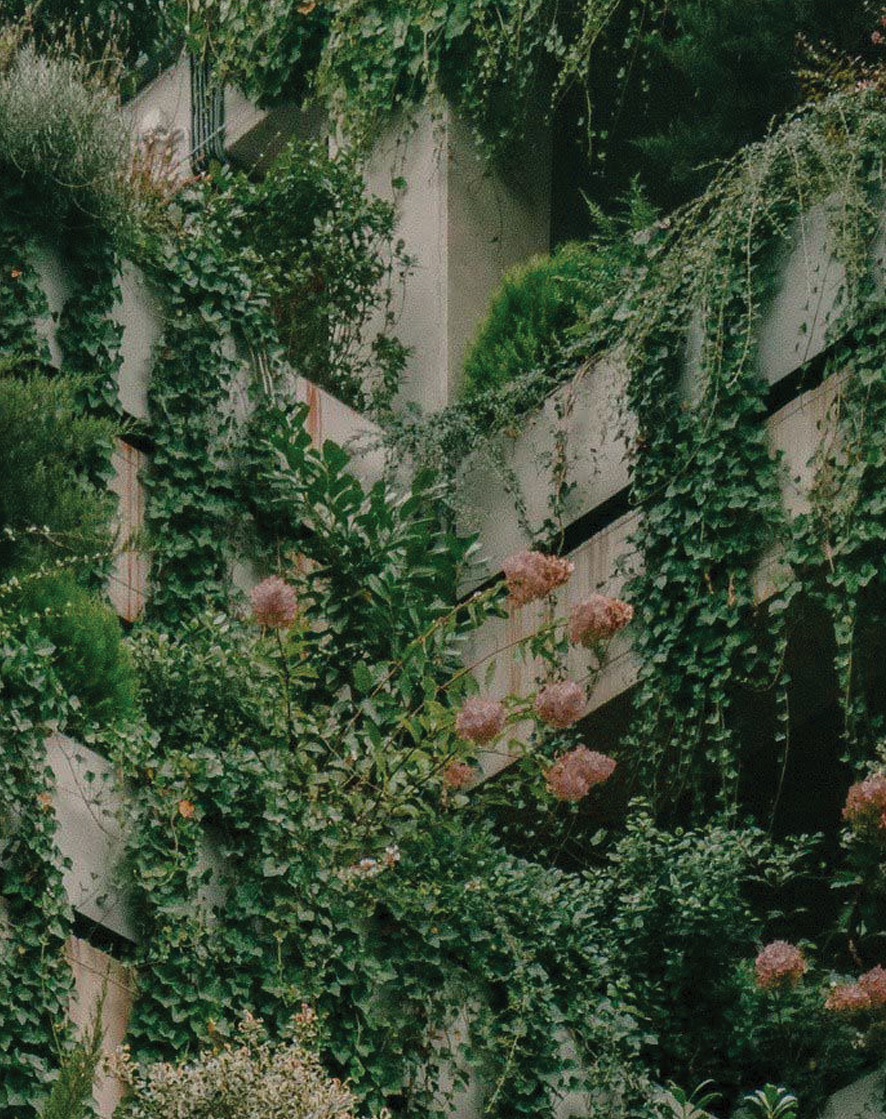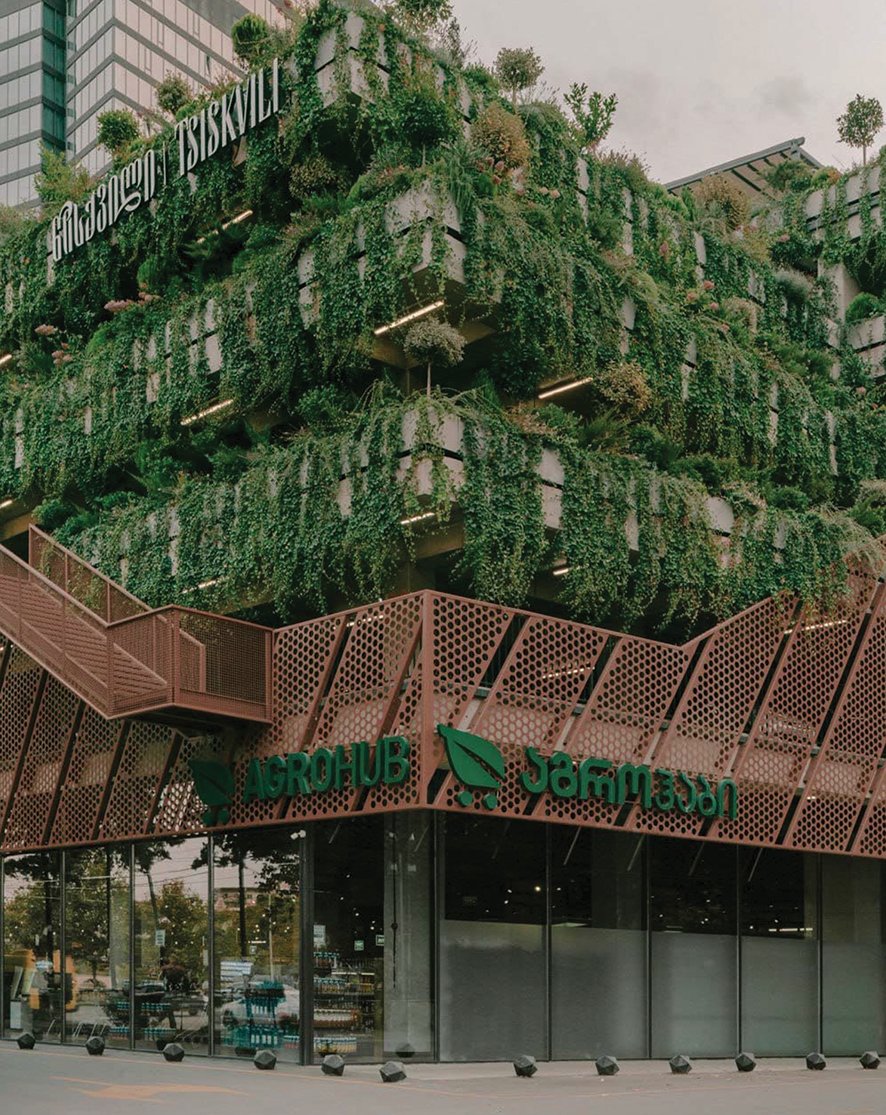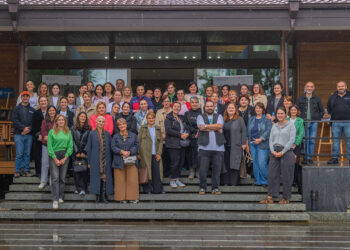In May 2025, the architectural world briefly turned its gaze toward Georgia — and not because of a heritage monastery or a Soviet relic being restored from Instagrammable decay. Instead, it was a parking lot. Or rather, a hypermarket. Or was it a terrace restaurant? All of these, combined under one reinforced-concrete roof, are what make Agrohub Tbilisi — a multi-functional urban structure on the right bank of the Mtkvari River — the recipient of the prestigious Architizer A+ Award. Developed by the Tbilisi-based architectural studio Studio 9, this structure now stands as a rare emblem of contemporary Georgian architecture receiving global validation.
But what exactly does the award tell us — not only about the building, but about the society that built it, the systems that celebrate it, and the broader cultural values that architecture encodes?
Between Function and Fantasy: What Does an Award-Winning Hypermarket Say About Us?
The Architizer A+ Awards claim to honor projects that “improve daily life,” aligning with ideals of sustainable development, urban integration, and civic impact. In a world beset by planetary crisis and housing unaffordability, architecture has been rebranded from an elite aesthetic pursuit to a social instrument. But the tension between these two poles — architecture as utopia vs. architecture as real estate — remains.
Agrohub, with its hybrid program of grocery store, open-air parking, and rooftop restaurant, resembles the kind of “new typology” theorized by Rem Koolhaas in Delirious New York — a vertical collage of urban functions. This isn’t merely a building; it is a system, a condensed city block, a reflection of consumer desire under late capitalism.
And yet, its award-winning status invites a deeper question: what does it mean for a consumerist space — devoted to circulation, convenience, and consumption — to be seen as a public good?
The Urbanism of Accumulation: Supermarkets as Social Spaces
Traditionally, the supermarket has been a symbol of American-style abundance — the architectural embodiment of choice, scale, and surplus. In post-Soviet Georgia, such symbols took on an aspirational, even civilizational quality. From the arrival of Goodwill in the early 2000s to the polished excess of Carrefour franchises in the 2010s, the supermarket in Tbilisi was not just where you bought cheese — it was where you experienced modernity.
Agrohub took this one step further. It borrowed the aesthetics of the “food hall” from global trends: open counters, artisanal branding, and spatial generosity. With the addition of a rooftop terrace restaurant and vertical mobility, it claims a place in the new global genre of “marketplaces-as-lifestyle-destinations” — from Eataly in Milan to Time Out Market in Lisbon.
But can we equate such places with public infrastructure? Can a hypermarket become a “civic space”? Philosopher Henri Lefebvre, in The Production of Space, would urge us to be suspicious. He warned that commodified urban space often masquerades as communal while serving capital’s interests. The danger is that Agrohub is not a commons — it is a curated experience of “urbanity,” available only to those who can afford it.

Parking Lot Panoramas: The Vertical Sublime of Studio 9
One might ask: why is the upper level a parking lot? This odd architectural move — to place cars atop a market, with humans dining somewhere in between — reflects a distinct shift in urban thinking. No longer do we bury the car underground or banish it to suburban peripheries. In places like Tbilisi, where land is scarce and topography unforgiving, vertical stacking becomes the most economical and logical response.
But logic doesn’t make it beautiful. What does is Studio 9’s ability to integrate the brutalist elements of post-Soviet construction (raw concrete, massive volumes) with moments of spatial generosity: wide views, filtered natural light, a rare dialogue between city and river. This mix recalls some of the best examples of adaptive reuse and “found urbanism” — like Herzog & de Meuron’s parking garage in Miami or SANAA’s cultural facilities in Japan.
Studio 9, in this case, seems to understand that a city is not made only of landmarks, but also of interstices — thresholds, pauses, surfaces of transition. The building becomes a theatre of the everyday: groceries, tires, a drink at sunset.
Sustainability as Semiotics: What Green Architecture Really Signals
A+ Awards markets itself as celebrating sustainable design. But sustainability today is less a practice than a semiotic field — a language of symbols (recycled materials, solar panels, urban gardens) that signals virtue in architecture, often more than it enacts it.
What does “sustainability” mean in Agrohub’s case? The official materials are thin on ecological specifics. There’s no mention of energy systems, greywater recycling, or climate responsiveness. Instead, the building communicates sustainability through typology — the mixing of uses, the reduction of car trips by co-locating functions, and the provision of public terraces. In other words, sustainability is inferred through urban form, not technical systems.
Sociologist Bruno Latour might call this a form of “actor-network semiotics” — where buildings accrue social meaning by the way they arrange human and non-human actors (cars, groceries, meals, people) in spatial networks. The question is not what the building does, but what it assembles.

Tbilisi, Global South Urbanism, and the Architecture of Aspiration
There is something quietly subversive about Agrohub’s win. For decades, Tbilisi has been either frozen in its picturesque past or caricatured as a city of post-Soviet decay. Buildings like Agrohub disrupt both narratives. They declare: Georgia builds now. It builds with confidence, scale, and an eye on the global stage.
And yet, the aspiration is not without its anxieties. To be awarded by a Western institution is still to be validated from outside. The postcolonial theorist Homi Bhabha might call this a moment of mimicry — where the post-Soviet subject becomes “almost the same, but not quite.” Agrohub is a mall, yes, but a Georgian one. It is a car park, but with views of the Caucasus. It is a copy — of a copy — of a global typology, but with locally grounded ambition.
The challenge ahead is not simply to imitate global architecture, but to generate new forms of Georgian urbanism — rooted in the peculiarities of geography, the rhythms of local life, and the deep historical memory of the city.
In The Architecture of the City, Aldo Rossi argued that cities are not merely functional machines, but collective artifacts — repositories of memory, identity, and symbolic meaning. Agrohub, as strange as it may seem, now enters that archive. It stands as a snapshot of what Tbilisi is becoming: a city negotiating between past and present, river and road, food and fuel, dreams and dust.
Whether this is a future we want — or merely one we have accepted — remains an open question. For now, Agrohub invites us to ask what we build when we build. And for whom. And why.
By Ivan Nechaev














